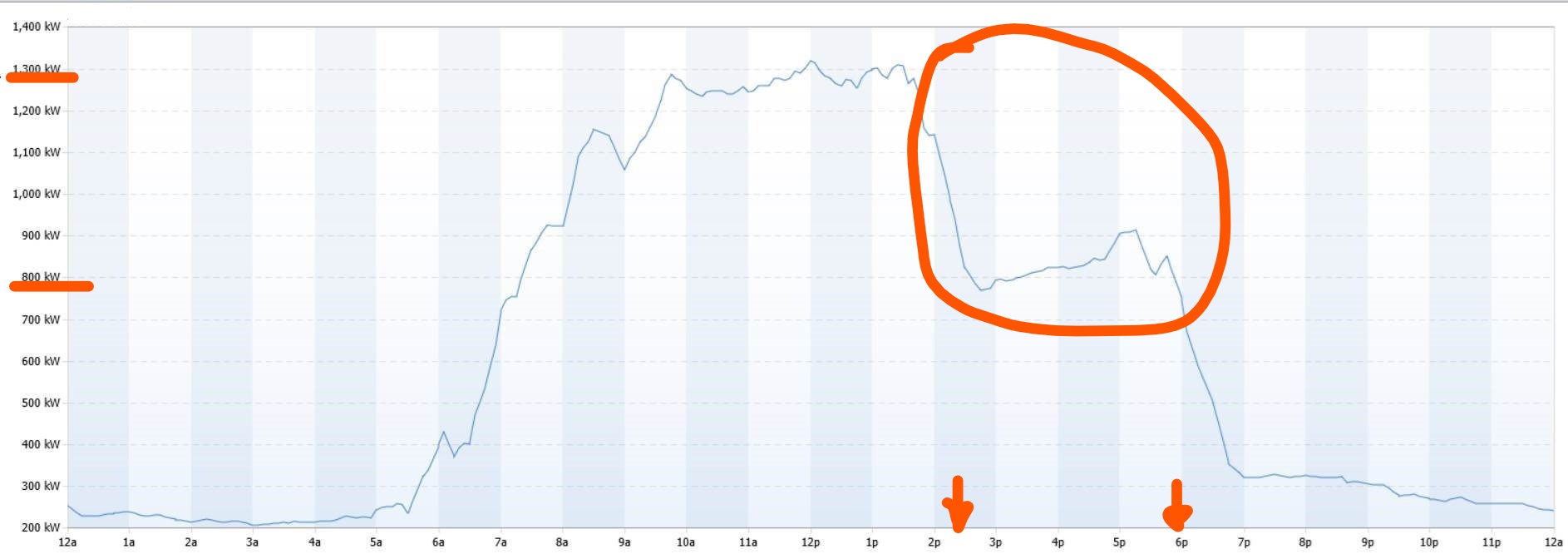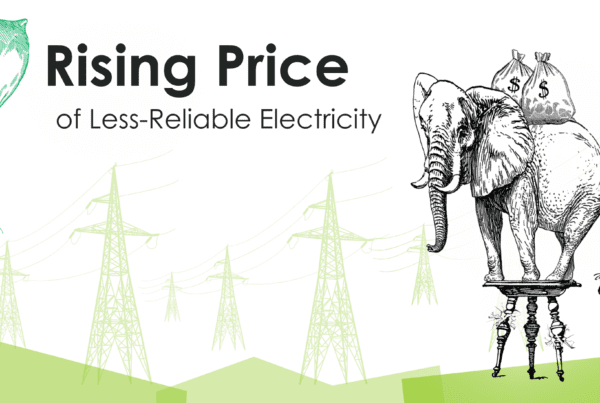
Energy storage is easy and cheap. Grid-grade electricity storage is complex and expensive.
Definitions of energy storage vary. Some consider hot water, chilled water, or ice to be stored energy. It’s really storing the benefits of energy consumption. For phenomenal refreshers and mental strolls down memory lane, see Storing Energy v Storing Benefits and Something Old, Something Old.
Why is grid-scale electricity storage so expensive? To answer this question, let’s consider the forms of storage and the hurdles that must be overcome to make it cost effective.
Electricity Storage Challenge #1 = Inefficiency
First, we have the storage of potential energy for power generation, including pumped hydro, compressed air, or even liquefied air, flywheels, and my favorite, storage trains. Some of these storage technologies may make sense to the underinformed, but to others, they have too much loss to overcome. For example, 90% of electricity used to compress air converts to useless waste heat. Why not use the heat? Because it is low-grade, low-temperature, and it is very difficult to find a facility that can use it.
Even pumped hydro, which represents a more efficient storage means, has a round-trip efficiency of 50%, tops. Why? Because the pump to store energy and the turbine to produce energy are each about 70% efficient, not even counting the motor and generator losses of 10% each. To wit:

OUCH
Per the first law of thermodynamics, 100% of the energy is preserved, but a large portion of that preserved energy is useless waste heat. The second law of thermodynamics is used to determine how much useless waste heat there is.
The beauty of the rail car storage (are you listening, West Coasters?), is that the round-trip efficiency is very high. We have practically frictionless (minimal useless waste heat) steel wheels rolling on steel tracks. How can trains so efficiently transport cargo? No rolling friction!
Electricity Storage Challenge #2 = Slow Response
One of the challenges of moving away from spinning reserves, namely steam turbines associated with coal and nuclear power plants, is the ability to respond fast enough to demand surges, especially due to faults such as when some other source fails. Something else must pick up the load instantly. Batteries are too slow for this.
Many of our loads were developed by indirectly assuming all power is delivered by reliable coal and nuclear power, or maybe hydro. Sophisticated electronics control practically everything that draws electricity. Those electronics are susceptible to swings in voltage and frequency, which must be maintained in very tight limits. Electricity isn’t like the internet that slows down a little or a big hill on which a vehicle cannot maintain speed.
The fastest sources of electricity supply include flywheels, including large turbines, or capacitors, which essentially hold a static charge. Each of these can respond almost instantly.
Consider an uninterruptible power supply for a computer server or data center. Those provide power with electronic flywheels, so to speak. All power flows through the system as it is constantly charging and discharging (passing current). It maintains power while reliable backup sources come up to speed, or in some cases the system can have an orderly shutdown to protect data.
The State of Grid-Scale, Grid-Grade Electricity Storage
Now let’s consider storage for the grid. Greentech Media reports 431 MWh of grid storage was installed in 2017, and 1,233 MWh of storage is predicted for installation in 2018. A mediocre nuclear plant has a generating capacity of 1,000 MW, all the time. So you can see, storage additions are still puny.
Non-Wire Alternative
Utility Dive takes the story down the road a ways, providing considerations and describing advantages for storage. For example, rather than replacing 100% of a transmission line and associated transformers, a storage unit can be installed at the other end of the line. This acts like compressed air storage. Rather than running at higher air pressure all the time, or replacing the line with something larger and more expensive, place a storage tank near the big load and let it be the flywheel.
Non-Generator Alternative
Utility Dive’s second example describes the use of storage as an alternative to peaker plants. This is fine, especially where loads and supply are predictably consistent, such as the west where solar supply and system demand curves are very consistent. For wildly varying wind, not so much. Furthermore, smaller storage designed to carry the grid through the peak part of the day is nice, but it does very little to add resilience in case of a fault or some large supply going down. The last catch-all of a microgrid demonstration I just toured included diesel generators – not exactly the cheapest source of power, but the most reliable source of power. When all else is drained, the mighty diesels are ready.
Lastly, Utility Dive says, let the market do the heavy lifting. They say storage is not the “silver bullet.” Let customers respond to price signals.
Touché!
Non-Waste (as in money) Alternative
What about efficiency and demand response? What does it cost to offer bids to hundreds or thousands of customers to curtail, or setback, or shut off major loads like water heaters and air conditioners? A pittance, by comparison. The chart below shows a load shifting pilot project we are delivering for a medium-size office building. Between the hours of 2:00 and 6:00 in the afternoon, the load reduction is over 35% on average. What does that cost compared to storage? Chum v Beluga Caviar.





